
Flintshire is a county in the north-east of Wales. It has a maritime border with Merseyside along the Dee Estuary to the north, and land borders with Cheshire to the east, Wrexham County Borough to the south, and Denbighshire to the west. Connah's Quay is the largest town, while Flintshire County Council is based in Mold.
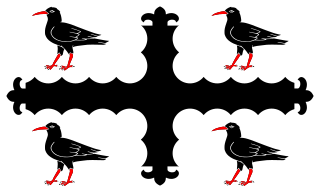
Until 1974, Flintshire, also known as the County of Flint, was an administrative county in the north-east of Wales, later classed as one of the thirteen historic counties of Wales.

Flint is a town and community in Flintshire, Wales, lying on the estuary of the River Dee. It is the former county town of Flintshire. According to the 2001 Census, the population of the community of Flint was 12,804, increasing to 12,953 at the 2011 census. The urban area including Holywell and Bagillt had a population of 26,442.
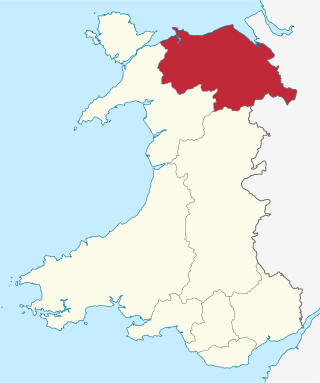
Clwyd is a preserved county of Wales, situated in the north-east corner of the country; it is named after the River Clwyd, which runs through the area. To the north lies the Irish Sea, with the English ceremonial counties of Cheshire to the east and Shropshire to the south-east. Powys and Gwynedd lie to the south and west respectively. Clwyd also shares a maritime boundary with Merseyside along the River Dee. Between 1974 and 1996, a slightly different area had a county council, with local government functions shared with six district councils. In 1996, Clwyd was abolished, and the new principal areas of Conwy County Borough, Denbighshire, Flintshire and Wrexham County Borough were created; under this reorganisation, "Clwyd" became a preserved county, with the name being retained for certain ceremonial functions.
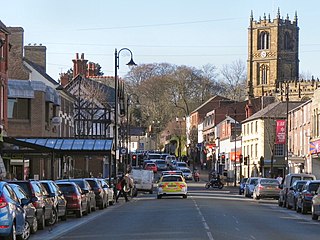
Mold is a town and community in Flintshire, Wales, on the River Alyn. It is the county town and administrative seat of Flintshire County Council, as it was of Clwyd from 1974 to 1996. According to the 2011 UK census, it had a population of 10,058. A 2019 estimate puts it at 10,123.

Conwy, previously known in English as Conway, is a walled market town, community and the administrative centre of Conwy County Borough in North Wales. The walled town and castle stand on the west bank of the River Conwy, facing Deganwy on the east bank. The town formerly lay in Gwynedd and prior to that in Caernarfonshire. The community, which also includes Deganwy and Llandudno Junction, had a population of 14,753 at the 2011 census.

Mostyn is a village and community in Flintshire, Wales, and electoral ward lying on the estuary of the River Dee, located near the town of Holywell. It has a privately owned port that has in the past had a colliery and ironworks and was involved in the export of commodities, and in present times services the offshore wind industry and ships the wings for the Airbus A380 which are manufactured at Broughton.

Flintshire County Council is the unitary local authority for the county of Flintshire, one of the principal areas of Wales. It is based at County Hall in Mold.
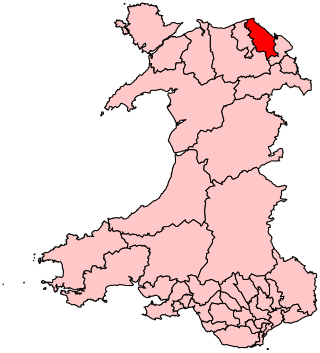
Delyn is a constituency represented in the House of Commons of the UK Parliament since 2019 by Rob Roberts, who was elected as a Conservative, but currently sits as an Independent following sexual harassment allegations.

Delyn was a local government district with borough status from 1974 to 1996, being one of six districts in the county of Clwyd, north-east Wales.
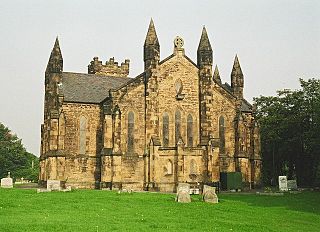
Bagillt is a large village and community in Flintshire, Wales. The village overlooks the Dee Estuary and is between the towns of Holywell and Flint. At the 2001 Census the population was recorded as 3,918, increasing to 4,165 at the 2011 census. The community also includes the settlements of Coleshill, Walwen and Whelston.

Flint Castle in Flint, Flintshire, was the first of a series of castles built during King Edward I's campaign to conquer Wales.
This is a list of High Sheriffs of Flintshire.

Cowbridge Town Hall is a public building in the High Street of Cowbridge in South Wales. The town hall, which is the meeting place for Cowbridge with Llanblethian Town Council, and also houses the town clerk's office, the committee rooms and the Cowbridge Museum, is a Grade II* listed building.

Conwy Guildhall is a municipal structure in Rose Hill Street, Conwy, Wales. The guildhall, which is the meeting place of Conwy Town Council, is a Grade II listed building.
The North Wales Coast FA Junior Challenge Cup is a football knockout tournament involving teams from in North Wales who play in leagues administered and associated with the North Wales Coast Football Association.
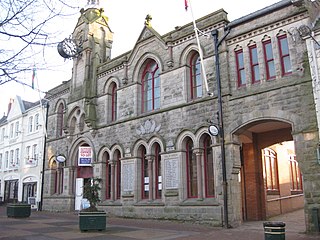
Holywell Town Hall is a municipal structure in the High Street in Holywell, Wales. The façade of the town hall, which is the only surviving part of the original structure, is a Grade II listed building.
The Flintshire Militia, later the Royal Flint Rifles was an auxiliary regiment reorganised in the Welsh county of Flintshire during the 18th Century from earlier precursor units. Primarily intended for home defence, it served in all of Britain's major wars, and supplied many recruits to the Regular Army. After a short-lived merger with another Welsh militia regiment it became a battalion of the King's Royal Rifle Corps but was disbanded in 1889.


















